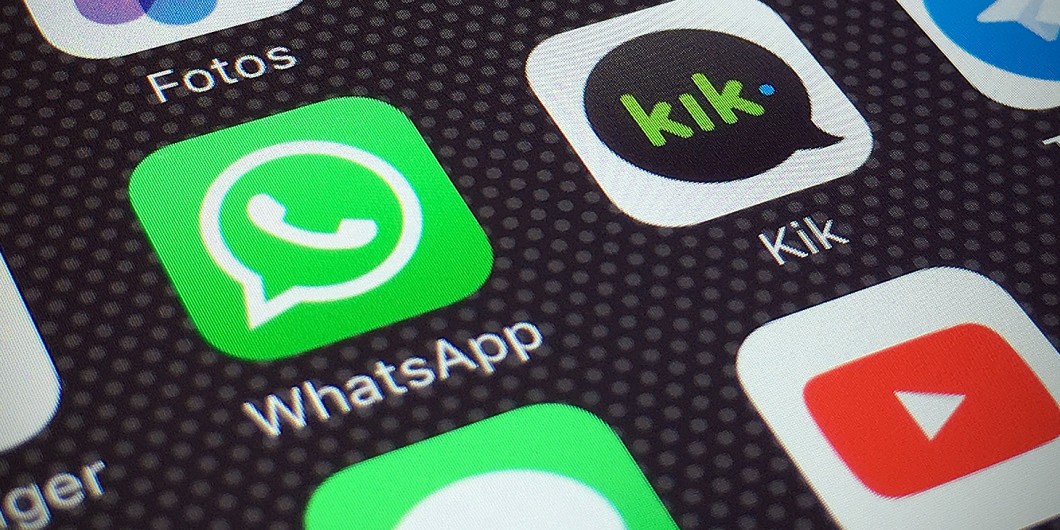In recent months, there’s been an avalanche of news about and launches of new instant messaging products: Google Allo and Duo, Apple’s refreshed iMessage and the Facebook Messenger chatbots, to name a few.
At the root of this messaging war is a convergence of three trends: the rising popularity of messaging applications, notable advances in the world of artificial intelligence and the emergence of new approaches to web and mobile interfaces.
Instant messaging, more dominant than social media
Younger users are turning away from social networks, relying more and more on conversational apps. So much so, that since 2015, the combined number of users for the four biggest messaging apps (WeChat, WhatsApp, Viber and Messenger) exceeds that of the four biggest social networks (Facebook, Twitter, Instagram and LinkedIn) according to Business Insider.
Even if penetration rates in Canada are well below the world average, there is impressive growth. In fact, eMarketer forecasts indicate that 74% of North American Internet users will be using an instant messaging app by 2019.
The conversational era
For brands that are finding it hard to get mobile applications adopted or to develop social media presence, messaging platforms are a gold mine. WeChat delivered its first official numbers in 2014. Since then, brands have started to use the application to deliver customer service and even make sales, thanks to an entirely automated interface. And even as the potential uses of instant messaging continue to diversify, new apps continue to appear (Slack, Telegram, Kik, etc.).
Facebook has kicked off a frantic race by Western giants to catch up with the new model offered by WeChat and to capitalize on new mobile opportunities. Since last April, Messenger has enabled users to directly connect with brands thanks to chatbots.
Emojis, stickers, chatbots and personal assistants: who needs to write anymore?
The rising popularity of instant messaging has also led to the emergence of new languages. All major apps now offer a wide variety of tools to enhance your messages, including stickers, emojis and animated GIFs. Some apps even feature a personal assistant who suggests replies, learns from your behaviour and context, and sends messages with one click.
For brands, the rise of conversational robots improves their ability to fulfill customer needs, even for something as simple as selling pizzas or tacos.
What opportunities are there for brands?
24/7 customer service
The most obvious benefit is that the new functionalities offered by messaging apps enable brands to provide customer service around-the-clock, in any language, with no waiting times and no telephone line. Another advantage of using bots is that is shifts conversation from the public or shared sphere (i.e. Facebook wall or Twitter feed) to the private context of a messaging app.
Simplified mobile purchases
Brands can also offer their customers a new mobile purchase experience. These apps not only represent a new distribution channel, they also provide the opportunity to develop a unique experience for each user. Bots can guide consumers through each step of the purchase process with a simple question/reply mechanism.
A new brand platform
All these new platforms create new opportunities to win over a new generation of consumers. By adapting to their codes and uses (rather than imposing their own) and by increasing availability and their capacity to listen, even by providing users with conversational tools, brands can finally make their platforms more relevant to Millennials.
And if graphic interfaces were to disappear?
Beyond new branding opportunities, there’s also the question of whether this messaging war is pointing to a coming revolution in “human vs. machine” interfaces, as well as in “brand vs. consumer”.
These apps present a new way to interact with machines, using a more natural language. Even though we’re a long way from Hal (2001: A Space Odyssey) and Samantha (Her), applications like Magic (personal assistant) or Operator (mobile shopping) feature ultra-simplified interfaces that are highly suggestive of text messaging environments.
In 2015, Golden Krishna declared that the best interface is no interface. Massive advances in natural language (both written and spoken), as evidenced by Siri (Apple), Echo (Amazon), Home (Google) and Cortana (Windows), are making this goal seem more attainable than ever. In terms of the user experience (UX), consumers can now navigate using a series of questions/answers, which makes it easier to accomplish their primary task.
For brands, the emergence of natural language interfaces and the loss of visual differentiation makes it more crucial than ever to share their narrative and meta story in a unique voice, to analyze consumer behaviours (broadly speaking, not just from a UX perspective) and to view the customer relationship in terms of services (and not just products purchased). If brands don’t invest the time to do this, the brand is not being built and therefore, is reduced to a simple commodity. The first step on the road to brand extinction.


